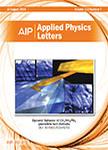版权所有:内蒙古大学图书馆 技术提供:维普资讯• 智图
内蒙古自治区呼和浩特市赛罕区大学西街235号 邮编: 010021

作者机构:Univ Shanghai Sci & Technol Sch Energy & Power Engn Shanghai Key Lab Multiphase Flow & Heat Transfer P Shanghai 200039 Peoples R China Fudan Univ Zhongshan Hosp Shanghai Inst Cardiovasc Dis Dept Cardiol Shanghai 200032 Peoples R China Hong Kong Univ Sci & Technol Guangzhou Thrust Sustainable Energy & Environm Guangzhou Peoples R China
出 版 物:《PHYSICS OF FLUIDS》 (Phys. Fluids)
年 卷 期:2025年第37卷第1期
核心收录:
学科分类:080704[工学-流体机械及工程] 080103[工学-流体力学] 08[工学] 0807[工学-动力工程及工程热物理] 0702[理学-物理学] 0801[工学-力学(可授工学、理学学位)]
基 金:Shanghai Pujiang Program 23PJ1409500
摘 要:Unlike traditional blood pumps, interventional microaxial blood pumps are characterized by their small size, high rotational speed, and narrow gap between the impeller rim and pump housing. These features result in an unstable flow field within the pump, leading to high shear stress regions that can cause hemolysis. To improve the hydraulic efficiency of the blood pump and mitigate blood damage, this paper proposes an interventional microaxial blood pump with a superhydrophobic surface. The finite element method was used to model the axial blood pump and arterial flow field, with Navier slip boundary conditions applied to the impeller and outflow structure walls, simulating a slip length of 50 mu m to represent the superhydrophobic surface characteristics. A combination of numerical simulations and hydraulic experiments was employed to evaluate the effects of the superhydrophobic surface on the pump s hydraulic performance and hemolysis characteristics. The results indicated that the designed interventional microaxial blood pump model demonstrated good blood compatibility. The superhydrophobic surface significantly reduced shear stress at the design point, with wall shear stress in the impeller and outflow structure regions decreasing by approximately 8.09%. Hydraulic efficiency increased by approximately 12.16%, and the hemolysis index decreased by about 12.60%. These findings provide valuable support for further optimization of microaxial blood pumps.